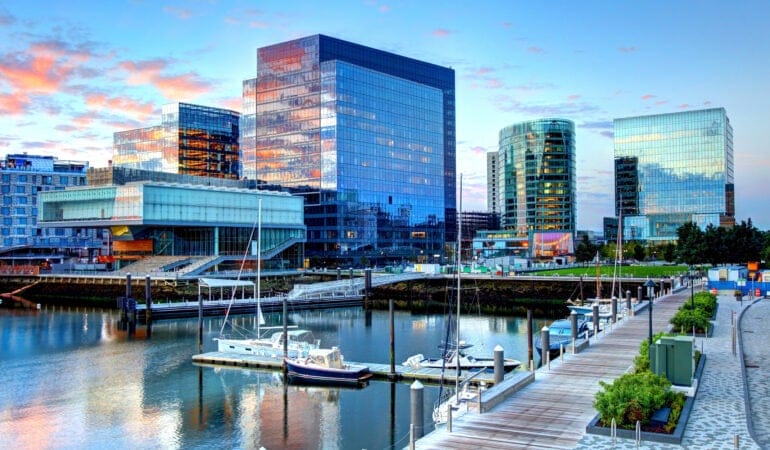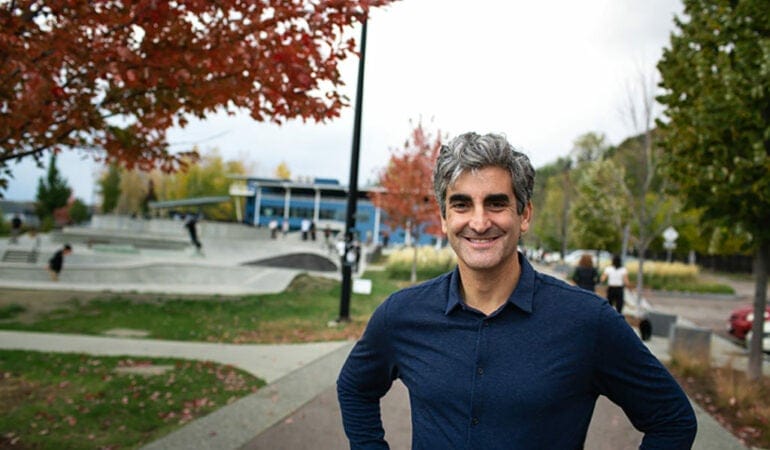In the increasingly urgent effort to curb greenhouse gas emissions and slow the damaging effects of climate change, local policy makers and planners are playing a critical role. The good news is, they have access to more data than ever. But wrangling, sorting through, and making sense of all this data can be a major challenge. A new crop of technological tools is helping to capture data related to municipal greenhouse gas emissions, organize it comprehensibly, and make it easy for municipal leaders to access.
In Minneapolis-St. Paul, the Twin Cities Metropolitan Council is working on an ambitious new effort to support local climate decisions. According to the Environmental Protection Agency, Minnesota’s emissions per capita as of 2016 were slightly above the national average of 16 metric tons of carbon dioxide per person. But breaking down the details behind that number can be complicated. Making it less complicated is a major goal of the council, which is a regional policy-making body, planning agency, and provider of essential services including transit and affordable housing for a seven-county region that includes 181 local governments.
In the works for about three years, and set for release this summer, the Metropolitan Council’s Greenhouse Gas Scenario Planning Tool grew out of the council’s work to promote regional livability, sustainability, and economic vitality, and is ultimately intended for use by any municipality in the United States.
Intriguingly, the process began by assembling a team of partners including several leading academics (from Princeton University, University of Texas at Austin, and the University of Minnesota) studying various aspects of climate change, as well as private-sector nonprofit partners—“giving us access to all the science and innovation that academia can bring, combined with the practical wisdom of government,” says Mauricio León, senior researcher for the Metropolitan Council.
León’s duties include greenhouse gas emissions accounting for the Twin Cities region, which makes him familiar with the complexities of both measuring emissions in the present and figuring out how to project that data into the future under different scenarios. The council’s recognition that this can be a time- and resource-consuming challenge for local governments led to the idea of building a web application that draws on existing databases and is adjustable according to specific policy strategies.
León and one of the council’s academic partners, Professor Anu Ramaswami—a civil and environmental engineering professor at Princeton who has been the principal investigator in the planning tool project—emphasized that such public/academic partnerships don’t happen often. “This is rare,” says Ramaswami, who has worked with individual cities for years, but seldom on a project meant to serve such a broad range of municipalities and local governments.
In terms of the process, she says, scientists and policy makers jointly framed the relevant questions, then built the model together. The collaborators identified data sets related to the primary sources of emissions. In the Twin Cities area, for example, 67 percent of direct emissions come from “stationary energy” such as the electricity and natural gas used to power homes and buildings, while 32 percent comes from on-road transportation. The team also identified the most promising reduction and offset strategies and policies, including regulations, economic incentives, public investments, and land uses such as parks and greenways. With three focus areas or modules—building energy, transportation, and green infrastructure—the application is designed to show policy makers the potential outcomes of various mitigation strategies. The overarching framework is pegged to the goal of local governments achieving zero emissions by 2040, an aspirational target adopted by the Metropolitan Council.
In a preliminary conceptual demonstration of the tool at the Lincoln Institute’s Consortium for Scenario Planning (CSP) conference earlier this year, León showed how different types of communities, from cities to rural areas, will have different impacts and strategy options. A city has a lot of transit options, for example, that a rural community doesn’t have. Policy makers using the tool can also factor in other key considerations, such as the equity implications of greenhouse gas reduction strategies that may impact some segments of a community more than others. “You can use this tool to create a portfolio of strategies that’s based on your values,” León explained.
With similar goals but a different approach, Boston’s Metropolitan Area Planning Council (MAPC) unveiled a localized greenhouse gas inventory tool several years ago. MAPC’s tool focuses less on future scenarios and more on providing community-specific, accurate baseline data and estimates of the impacts of various activities and sectors. Guided in part by a greenhouse-gas inventory framework developed by the World Resources Institute, C40 Cities, and ICLEI-Local Governments for Sustainability, it attempts to measure a municipality’s direct and indirect emissions.
Jillian Wilson-Martin, director of sustainability for Natick, Massachusetts, says the MAPC effort made available data and estimated impacts of car emissions, home heating, lawn care, and other factors that would be difficult for an individual town to collect. This helped Natick gauge its biggest sources of emissions, the starting point of a process to devise strategies to reduce them. Paired with offsets, the town aims to reduce its net emissions from 9 metric tons per capita to net zero by 2050. “It’s making it easier for smaller communities with no sustainability budget to get this really important data so they can be more effective,” Wilson-Martin says.
While MAPC provides guidance and training resources to the 101 cities and towns it serves in eastern Massachusetts, it’s up to leaders in each municipality to customize how they measure their local emissions inventory, and how they might use that for planning. This may limit specific forecasting uses, but has another payoff, says Tim Reardon, director of data services for MAPC. “Ultimately the value of having a nuanced and locally tailored tool is to gain credibility and buy-in with stakeholders at the local level,” Reardon explained at the CSP conference. While big-picture data that doesn’t apply to a particular community can be a turn-off, he said, local data brings the global climate crisis down to the ground and reduces a barrier to talking about what has to happen locally to ensure a resilient future.
Often in discussions around greenhouse-gas scenario planning, León agrees, “there’s this element of ‘this is just too complex for us to even think about.’” The council’s simple web tool is meant to help counter that argument. It’s designed to show in clear, graphic form the difference in emissions levels that would result from adopting various specific tactics, versus simply continuing the status quo.
One benefit of such an accessible tool, Ramaswami adds, is that it encourages wider involvement and thus “opens up more creative opportunities.” In fact, she says, the project has had a similar effect on its academic partners: “It requires a different kind of research mentality, and a different kind of research group” to work directly with municipalities and respond to real policy options. When the tool is released, it will be accompanied by the publication of related academic research from Ramaswami and the group’s other scholarly partners.
León acknowledges that the application will have its limits, and that ultimately more sweeping federal and global policies will have greater total impact than any single local initiative. But anything that boosts engagement is important, he says. And the web application is designed to encourage municipalities of all sizes to interact with the calculations and numbers the project team has compiled; they won’t have to upload their own data. “It’s really easy,” León says, “and there’s no excuse for them not to use it.”
Rob Walker is a journalist covering design, technology, and other subjects. He is the author of The Art of Noticing. His newsletter is at robwalker.substack.com.
Image: Leaders in Natick, Massachusetts, have used a greenhouse gas tool developed by Boston’s Metropolitan Area Planning Council to gauge the town’s largest sources of emissions. Credit: Denis Tangney Jr. via iStock/Getty Images Plus.




